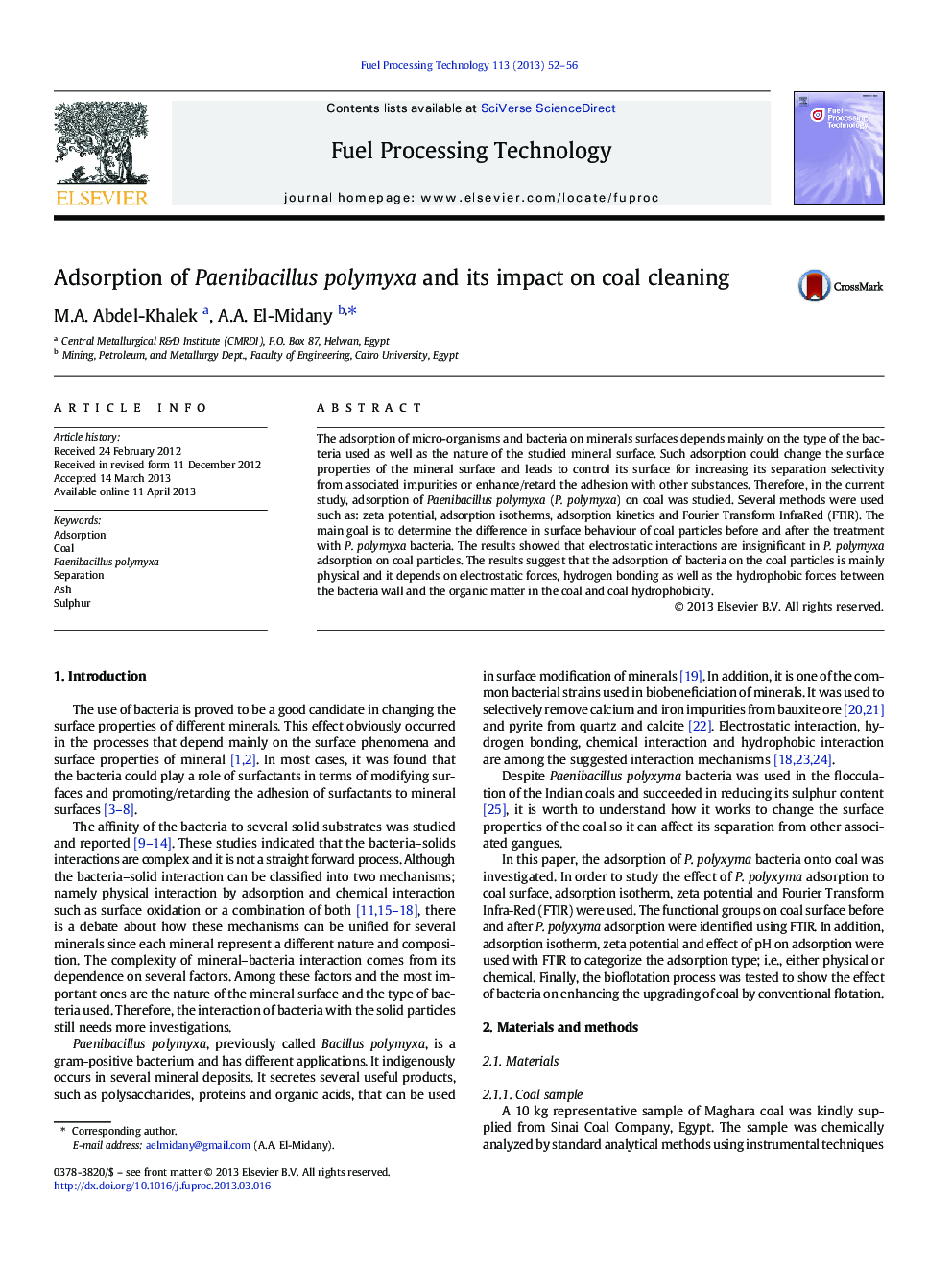| Article ID | Journal | Published Year | Pages | File Type |
|---|---|---|---|---|
| 210014 | Fuel Processing Technology | 2013 | 5 Pages |
•Coal, is an important source of energy, contains sulphur and mineral matter impurities.•Change the surface properties of coal to increase its separation selectivity•Adsorption of Paenibacillus polymyxa on coal was studied.•Results indicated the coal–PP depends on H-bonding and hydrophobic forces.•Interaction of bacteria with coal reduces its sulphur and ash content.
The adsorption of micro-organisms and bacteria on minerals surfaces depends mainly on the type of the bacteria used as well as the nature of the studied mineral surface. Such adsorption could change the surface properties of the mineral surface and leads to control its surface for increasing its separation selectivity from associated impurities or enhance/retard the adhesion with other substances. Therefore, in the current study, adsorption of Paenibacillus polymyxa (P. polymyxa) on coal was studied. Several methods were used such as: zeta potential, adsorption isotherms, adsorption kinetics and Fourier Transform InfraRed (FTIR). The main goal is to determine the difference in surface behaviour of coal particles before and after the treatment with P. polymyxa bacteria. The results showed that electrostatic interactions are insignificant in P. polymyxa adsorption on coal particles. The results suggest that the adsorption of bacteria on the coal particles is mainly physical and it depends on electrostatic forces, hydrogen bonding as well as the hydrophobic forces between the bacteria wall and the organic matter in the coal and coal hydrophobicity.
